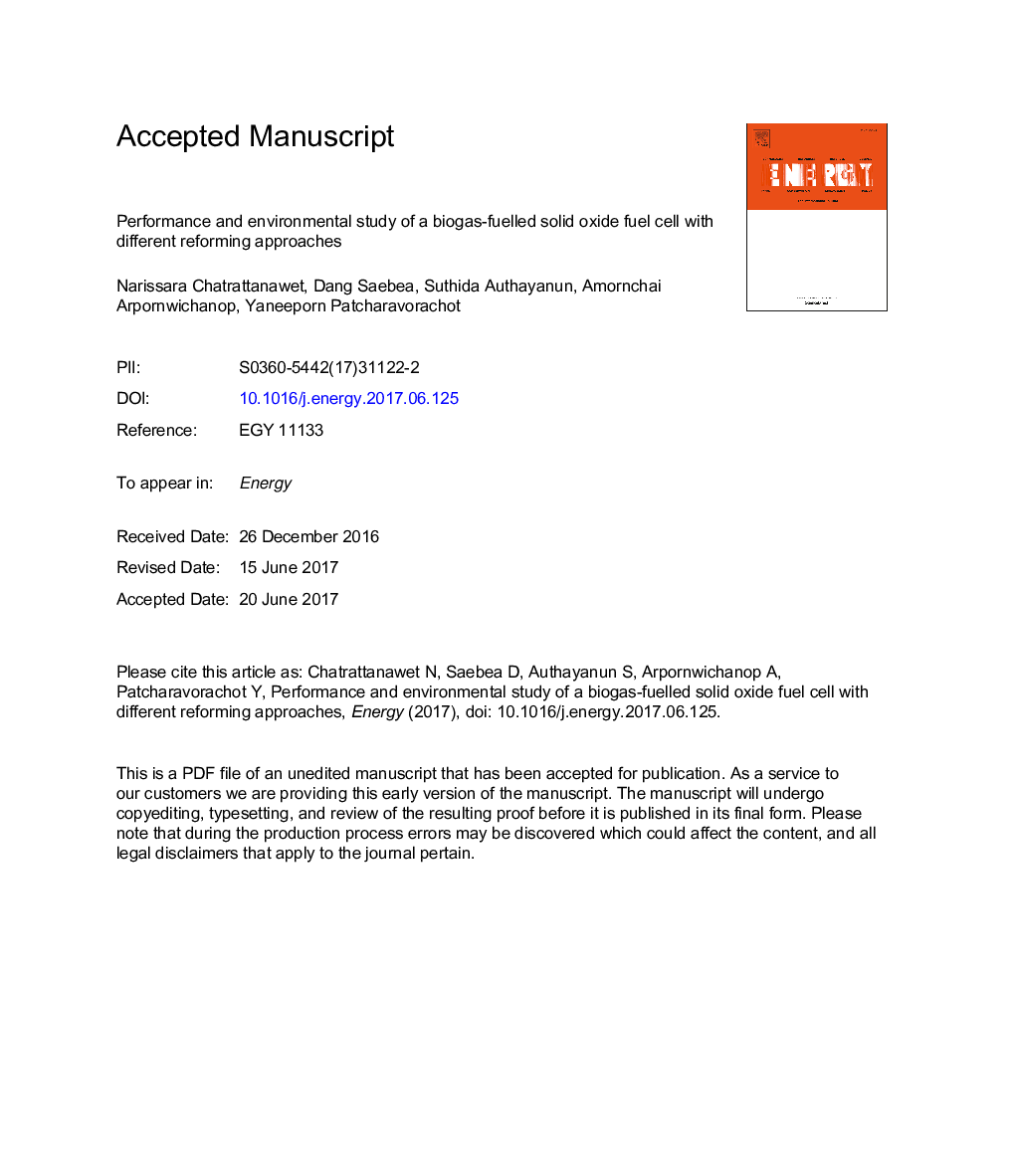| Article ID | Journal | Published Year | Pages | File Type |
|---|---|---|---|---|
| 8072134 | Energy | 2018 | 42 Pages |
Abstract
In this work, solid oxide fuel cells (SOFCs) using biogas as the fuel with two different reforming approaches, i.e., external and internal reforming, were studied to determine the optimal operation conditions for each approach. Thermodynamic analysis was performed using a flowsheet simulator. The equilibrium gas composition was calculated by minimizing the Gibbs free energy. An electrochemical model that includes three voltage losses (i.e., activation, ohmic, and concentration losses) was used to predict the performance of the SOFCs. The simulation results showed that the reformer in the external reforming SOFC should be operated at a temperature of 973Â K, a pressure of 1Â atm, and a steam-to-carbon molar ratio of 0.5. In performance analysis, the simulation results indicated that both approaches have the same optimal operating conditions, i.e. a temperature of 1173Â K, a pressure of 3Â atm, and a current density of 5000 A/m2. Under the same operating conditions, the internal reforming SOFC exhibited better electrical efficiency than that of the external reforming SOFC. Considering the CO2 and CO emissions, the exhaust gas obtained from the anode side of the internal reforming SOFC contained 7.4% CO2 and 37.9% CO, which are higher values than those for the external reforming SOFC (1.9% CO2 and 32.5% CO).
Related Topics
Physical Sciences and Engineering
Energy
Energy (General)
Authors
Narissara Chatrattanawet, Dang Saebea, Suthida Authayanun, Amornchai Arpornwichanop, Yaneeporn Patcharavorachot,
